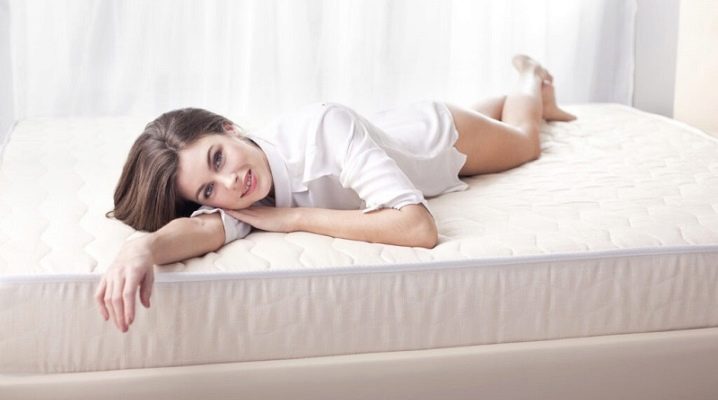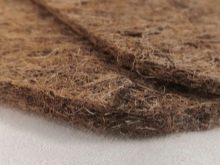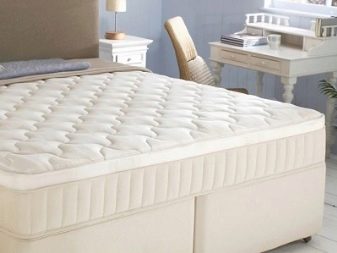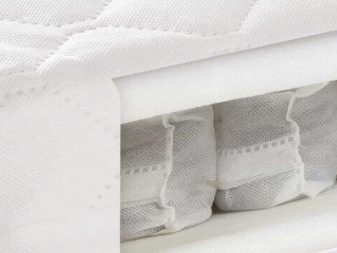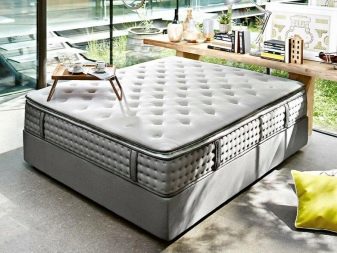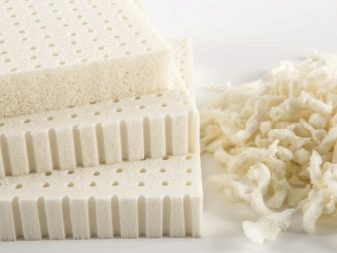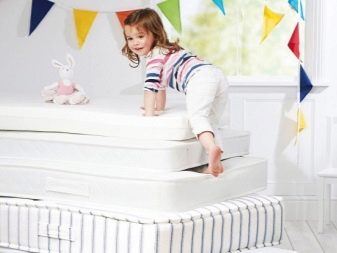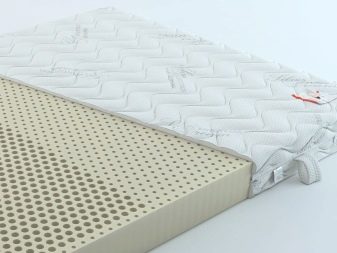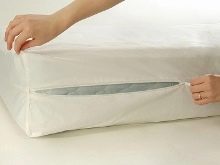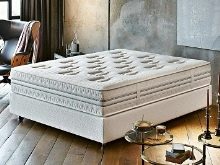Which mattress is better - spring mattress or polyurethane foam?
A mattress is an indispensable element of a bed or sofa. It is already built into the finished bedroom set. However, when the regular mattress in the furniture for some reason did not suit the consumer, he will acquire another - separate.
Differences in noiselessness
A spring mattress, in which the springs are interconnected, squeaks when a person sleeping on it turns over. The user of such a mattress can wake up at night from the squeak of the springs. The creak is accompanied by additional vibration that is transmitted along the entire spring frame lying next to it. A mattress without springs, for example, polyurethane foam, does not contain parts that not only creak when moving, but also sooner or later may fail. The energy of the movements is not transferred to another person lying next to him.
Comparison of other characteristics
Equally important characteristics are air permeability, the ability not to interfere with a sleeping person next to them with their movements, strength, comfort. According to these parameters, the option that is optimal in price is chosen.
Air exchange
Some materials are breathable - but not all. "Breathing" includes fiber matter (all its varieties), jacquard, cotton wool, coconut fiber. But synthetics do not always allow air to pass through: if it is within the power of foam rubber and its modifications, then mattress foam (foam material), for example, polyurethane foam (PPU), does not have such properties.
The foam already contains air closed from the outside environment: if the bubbles were punctured, then the plastic would be blown away, and there would be no sense from it after turning into a dense pressed layer.
Air exchange is important - without it, mold, fungus, and pathogenic microbes would have gotten in the mattress.
Isolation from extraneous movements
Springless and non-interconnected mattresses can be used as double mattresses without any inconvenience. They do not transmit vibration and shaking if a person lying next to them is constantly tossing and turning and cannot fall asleep. Independent springs are placed separately in fabric capes - these, in turn, eliminate friction between adjacent spring elements. This means that independent springs do not creak or rub against each other. In such a mattress, manufacturers get the opportunity to create zones of variable rigidity: for the shoulders and shoulder blades - harder, for the lower back - a less rigid reaction of the support, the role of which is played by the mattress.
Strength
Despite the fact that the metal structure - in this case, spring steel - is the hardest and most durable material in a spring mattress, its weak point is millions of load-relieving cycles. Whenever the sleeper moves, individual springs in an independent spring block (or all at once in a spring block) undergo compression and expansion cycles.
After several million cycles, the springs break one by one. Excessive loading wears them out many times faster: the spring cannot be kept compressed all the time to failure - it loses its height in a straightened state, becomes lower, and performs its functions worse. The springs deformed over time make the mattress stiffer, sagging, which will significantly affect its former elasticity.
The service life of a spring mattress with regular use and everyday use is no more than several years. Mattresses with interconnected springs, produced during the Soviet era, underwent rigorous and comprehensive testing: they did not save on materials and their high-quality processing, and a sofa with such a block could last up to 30 years.
Modern manufacturers from different countries, aimed at obtaining super-profits, save on the quality of materials - Today's spring blocks become practically unusable after 3-5 years of everyday use. The independent spring configuration, for added comfort, has about the same lifespan as a mattress frame with interconnected springs.
As for materials that do not require the use of a spring frame, coconut fiber and latex are considered the best. These are the most elastic materials - they will last up to 15 years, almost without losing their properties. Natural latex can be replaced with artificial latex - that, in turn, is not made from the extract of agave leaves, but on a polymer basis. Coconut material and latex alternate with each other in layers - in the context of the product is a kind of cake.
Coconut fibers located close to the surface - just behind the upholstery layers of fabric - will give the mattress extra firmness. Latex, on the other hand, will reduce it - being located in the same place. It is not always advisable to make a mattress completely from coconut fiber or latex - an excessively soft structure is contraindicated for children and adolescents, an excessively hard one for older people.
The concept of strength is hardly applicable to springless mattresses - rather, it has been replaced by resistance to premature bursting.
Comfort
A mattress is considered comfortable for a specific person who is aware of what hardness suits him best. For clarification, it is better to consult a doctor after undergoing a spinal examination. Additional restrictions on excessive rigidity are imposed when a given person has acquired problems with the musculoskeletal system of the body, as well as any disease of the cardiovascular system. An overly firm mattress inhibits normal blood circulation by squeezing some veins close to the skin's surface. All current health problems adjust the correct choice of mattress in their direction. As an example, we will give a few explanations.
If a child, teenager, young man is most often healthy, then a semi-hard mattress is selected for him. Powerlifting athletes, for example, need proper relaxation of the muscles and ligaments of the back during rest.
A good mattress in all respects is an addition to the so-called. hitching (stretching) after percussion workouts. In the lumbar region, the firmness of the mattress should be below average, in the vicinity of the shoulders and shoulder blades - higher.
Elderly people are strictly forbidden to use mattresses of medium hardness - not to mention especially hard ones. Even when an elderly person continues to maintain good shape and appearance, it is better not to take risks, but to play it safe: the old body is worn out and is not able to quickly recover after lying on a hard mattress. For the elderly, a mattress is more suitable either on the basis of an independent spring frame without zoning the amount of stiffness in its different places, or mainly on the basis of natural latex. It is not recommended to purchase low-quality synthetics, which, moreover, emit harmful fumes.
Price
Latex and coconut fiber mattresses are the most expensive. A single bed, which is a mattress for one person, reaches 25-30 thousand rubles at 2021 prices. Double - up to two times more expensive than a single product. Cheaper counterparts, including spring ones, can go down to 10 thousand rubles. and lower in cost. The price here is directly proportional to the durability. It is known that in pursuit of cheapness, you run the risk of changing the mattress up to 5 times in the same years, and the real price, by today's standards, taking into account the average annual inflation and all kinds of allowances charged according to the laws of the market economy, eventually bring a person to spending a larger amount and unnecessary spending of personal time on shopping trips and finding the best options. Don't skimp - it's better to get a high-quality product right away.
If you are a handyman at home, then the cheapest option would be to buy sheep or goat wool from the nearest farmer, as well as purchase a piece of dense natural fabric and thick threads. In this case, you can sew and quilt a homemade feather bed in a period from several hours to a couple of working days. It can be used both as a mattress and as a blanket - it will turn out to be environmentally friendly and breathable. Caring for such a mattress - annual drying in dry and hot weather, knocking out dust. The amount spent on such a mattress is unlikely to exceed 3-4 thousand rubles, and the product, with proper care, will last for 30 years. It will successfully replace polyurethane, foam and wadded mattresses.
Which one is better to choose?
The best industrial products are latex, fiber and coconut mattresses. Coconut stuffing is good for air, latex will add softness without losing elasticity, fiber in cold weather will isolate a sleeping person from the cold coming from the floor directly to him. A cheaper alternative to fiber is jacquard padding. A homemade wool and / or down mattress combined with a blanket made from the same padding will help keep the sleeper warm, even in a dimly heated room.
The upholstery of the mattress made of polyester fabric also retains body heat - unlike HB fabric, the polyester layer, having absorbed a little moisture, does not draw out heat. All other materials are not of such quality that the user's choice fell on them.
In some cases, it is better to wait until the required amount has been accumulated - and not to buy a mattress of unsatisfactory quality: a stingy and short-sighted user pays up to several times.
